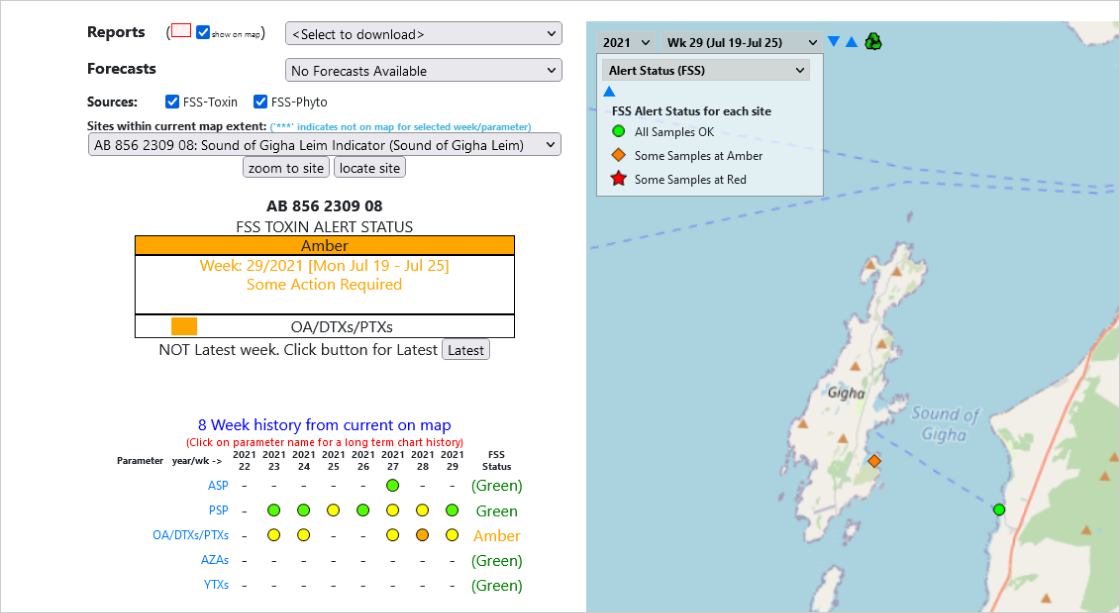SUMMARY
Harmful Algae blooms (HABs) represent a problem for marine ecosystems, the maritime industry, and generally speaking, coastal communities worldwide. Global ocean warming and increasing acidification, both driven by climate change, contribute to increased risk and frequency of harmful algal bloom events in many places worldwide.
Following an alert of potentially harmful algae and micro jellyfish presence, Skytek has analysed the conditions around the Scottish island of Gigha during the Summer of 2021, using optical and radar satellite imagery and data. Significant aquaculture interests around the island include a halibut farm and offshore salmon farms in the Gigha Sound.

Offshore Aquaculture Location
Offshore Aquaculture Location
The HAB (Harmful Algae Blooms) monitoring service in Scotland publishes water and marine organism sampling results. Reports published during the summer of 2021 indicate heightened toxin levels around mid-July 2021.
Skytek has investigated satellite-based Chlorophyll-a levels during the Summer of 2021 and discovered high levels of Chlorophyll-a around the island, peaking in July, which corresponds with amber toxin alert. The images depicted in Figures 3, 4 and 5 are of the island of Gigha from June, July and August 2021, from the Copernicus Sentinel-2 optical satellite. Figure 4 (July 2021) shows elevated Chlorophyll-a levels, indicating the presence of large amounts of organic matter and conditions conducive to harmful algae blooms.

Higher chlorophyll-a concentrations levels during the summer months are not unusual in some areas of the world. To establish whether the observed increased levels were abnormally elevated, the Skytek team has used an alternative method based on radar satellite imagery from the Copernicus SAR mission Sentinel-1. This innovative method was employed to detect harmful algae blooms and compare the results with past years, during the same months, to avoid seasonality changes. Figures 6, 7 and 8 show suspected harmful algae blooms (with the highest concentrations shown as yellow and light green) in the wider area around Gigha island. The broader analysis done by Skytek on multiple images from the summer seasons of 2019, 2020 and 2021 indicate unusually high levels of chlorophyll and suspected harmful algae blooms around the island.

The above study showcases the potential of using satellite imagery, both from optical and radar payloads, to monitor aquaculture sites for risks related to harmful algae blooms. This can alert operators, insurers, and other stakeholders of potential conditions that might lead to a higher risk of fish kills or the presence of harmful toxins in fish.






